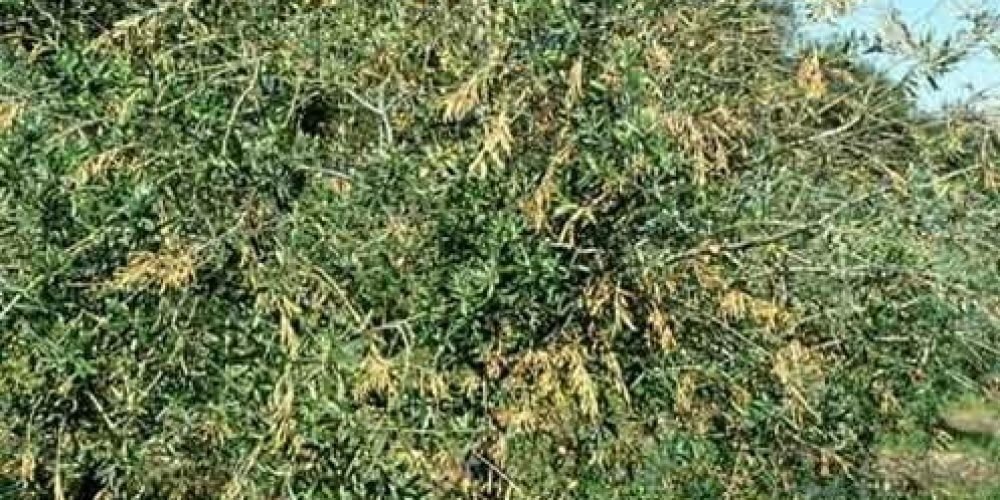جدول محتويات المقالة
Toggleيُعد الذبول الفرتيسيليومي للزيتون من الأمراض الفطرية التي تصيب أشجار الزيتون، مسببًا تدهورًا في صحتها وإنتاجيتها. وفي هذه المقالة في موقعكم عالم النباتات WORLD OF PLANTS، سنستعرض أعراض هذا المرض وطرق المكافحة للحفاظ على أشجار الزيتون.
- Disease name: Verticillum wilt of olives
- English name: Olive Verticillium Wilt
- The scientific name: Verticillium dahliae
- The type of disease: Fungal disease
- Species: Plectosphaerellaceae
أعراض مرض الذبول الفرتيسيليومي للزيتون
- Verticillium wilt of olive is a vascular disease that causes wilting, defoliation and branch death in olive trees.
- Initial symptoms may include yellowing or paleness of leaves, starting on the lower branches and progressing upward.
- As the disease progresses, the leaves may turn brown and fall prematurely.
- Affected branches may exhibit discoloration of the plant vessels, with the wood of the vessels turning green or dark brown.
- In severe cases, the entire tree may wither and die.
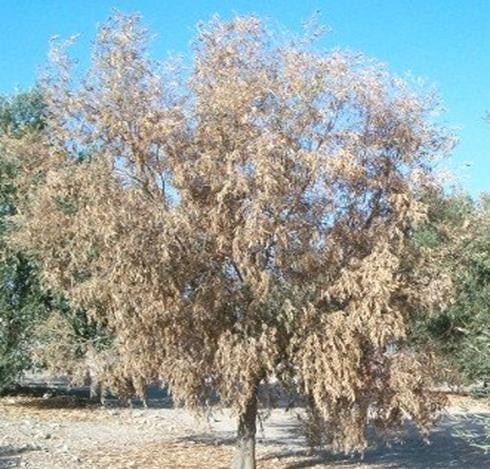
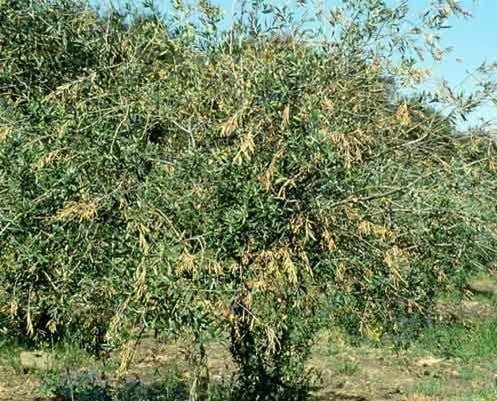
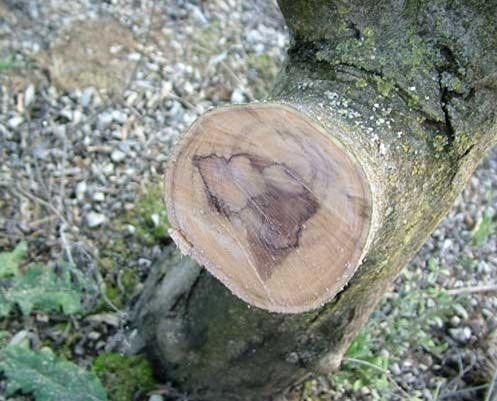
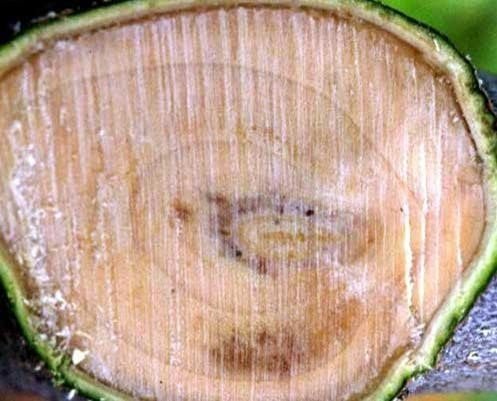
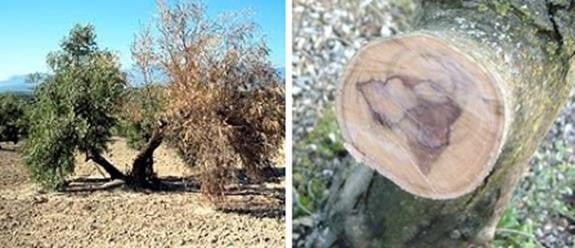
أسباب مرض الذبول الفرتيسيليومي للزيتون
- This disease is caused by the soil fungi Verticillium dahliae and V. albo-atrum.
- The disease cycle begins with the presence of these fungi in the soil, where they can survive for many years as diapause spores (condensed masses of thick-walled cells) or mycelium in plant debris.
- When olive roots come into contact with fungal spores in the soil, the fungi can penetrate and colonize the plant's vascular system (xylem vessels).
- Once inside the plant, the fungus can spread throughout the plant systematically, causing blockage of vascular tissue, wilting symptoms, and shoot death.
- As the disease progresses, the fungus can produce more dormant spores or mycelium fragments within the tissues of the affected plant.
- These spores can be released into the soil when plant material decomposes, becoming a source of future infection.
دورة مرض الذبول الفرتيسيليومي للزيتون
- The disease cycle can also be continued through the movement of infected plant material, contaminated soil, or contaminated tools and supplies.
- The fungus can remain in the soil for many years, even in the absence of host plants, making it difficult to break the disease cycle once a pathogen is established in an area.
- The spread of Verticillium wilt can be increased by factors such as poor soil drainage, high soil moisture levels, and environmental stress (such as drought or extreme temperatures) that weaken the plant's defenses.
الخسائر التي يسببها الذبول الفرتيسيليومي للزيتون
- Verticillium wilt of olives can cause significant economic losses in olive production due to reduced yields, tree decline, and, in severe cases, tree death.
- The disease can also affect the quality of olive oil produced from infected trees.
استراتيجية مكافحة مرض الذبول الفرتيسيليومي للزيتون
- Verticillium wilt control of olives involves an integrated approach, including the use of resistant or tolerant olive cultivars, proper soil drainage and irrigation management, avoidance of transport of contaminated soil, and application of soil fumigation treatments or biocontrol agents.
التدابير الوقائية لمرض الذبول الفرتيسيليومي للزيتون
- Preventive measures include using disease-free planting materials, practicing crop rotation with non-host plants, improving soil drainage, and avoiding excess soil moisture.
- Maintaining plant vigor through proper fertilization and watering can also help reduce susceptibility to the disease.
المكافحة العضوية/الكيميائية لمرض الذبول الفرتيسيليومي للزيتون
- For organic control, biological control agents such as certain strains of the fungus Trichoderma or the bacteria Bacillus subtilis and Pseudomonas fluorescens can be applied to the soil or incorporated into organic fertilizers.
- These beneficial microorganisms can help suppress the growth of Verticillium dahliae through various mechanisms, including competition, antagonism, and induced systemic resistance.
In conventional agriculture, soil fumigation with chemical fumigants such as methyl bromide or dinoseb can be effective in reducing Verticillium dahliae infection levels in the soil.
- However, these pesticides are highly toxic and have environmental concerns.
- Alternative chemical control methods include the use of systemic fungicides such as fluopyram or benzofendiflupyr, which can be applied as soil drench treatments or syringe injections to protect or treat infected trees.
وفي الختام، نود ان ننوه علي اننا نحن في موقع عالم النباتات WORLD OF PLANTS نقدم لك كل ما يلزمك من خدمات في عالم النباتات، فنحن نقدم لكل المزارعين والمهتمين بالنباتات ثلاث خدمات رئيسية هي:-
- خدمة تقديم الاستشارات بالذكاء الاصطناعي لمساعدتك في التعرف على الأمراض التي تصيب النباتات وكيفية التعامل معها.
- مدونة عن النباتات والأمراض التي تصيب النباتات والعناية بمختلف المحاصيل … انت تتصفح الآن إحدى مقالاتها الآن.
- تطبيق يقوم بتقديم استشارات زراعية للعملاء وايضاً خدمة تصوير الأمراض ومعرفة علاجها مجانا – انقر لتحميل نسخة الأندرويد من متجر جوجل بلاي, أنقر لتحميل نسخة IOS من متجر تطبيقات أبل.



